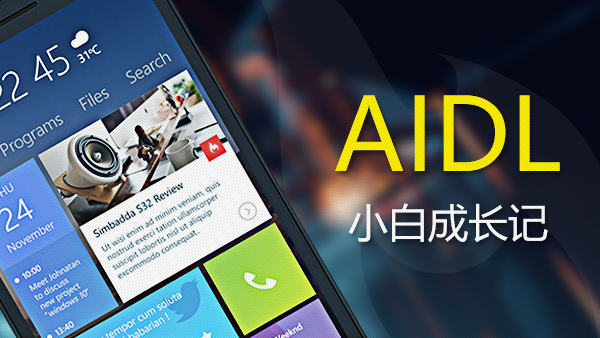前言的前言
众所周知,Android是免费开源的,所以我们每个人都可以获取到Android源码,最近手机耗电厉害,天天提醒,10分钟耗电20%。
不是,我这干啥了,就耗电这么快。后来就网上搜搜看看,到底是怎么回事。顺便逆向了一个万年历。
每个产品都想让自己的程序在后台能够长期的运行,不管是监测用户的行为,还是能够让自己正常的push,所以这个问题就引申出来了。
问:如何让自己的程序长期后台运行,杀不死。
前言 "前言")前言
看完我自己都惊了,感觉手机每天运行的都是什么乱七八糟,因为自己手机上装了这款app,而且这款app要求的权限异常的多,
所以就直接引起了我的注意,访问手机就账户列表,WIFI状态,照相机,读取联系人,锁屏,启动事件。
一个万年历就要这么多权限,不禁引起了好奇,所以决定一探究竟
一个万年历app是如何保活的 "一个万年历app是如何保活的")一个万年历app是如何保活的
说起万年历如何保活的,用白话来说,就是这么几个方法来实现
监听屏幕亮灭,如果屏幕灭,那么创建一个1像素的悬浮层。屏幕亮,把这个1像素的页面关闭,防止意外获取到焦点惹恼用户
利用账户系统,系统定期唤醒账号更新服务,欺骗系统我们的app有账号服务,然后定期同步账户,再做一些其他的事情
android5.0以后可以利用JobSchedulerService,使我们的程序定时被运行,以及一些其他条件
1像素悬浮层技术实现 "1像素悬浮层技术实现")1像素悬浮层技术实现
package cn.etouch.ecalendar.keeplive;import android.app.Activity;import android.os.Bundle;import android.view.Window;import android.view.WindowManager.LayoutParams;import cn.etouch.ecalendar.manager.ad;public class KeepLiveActivity extends Activity { public static KeepLiveActivity a = null; private boolean b = false; protected void onCreate(Bundle bundle) { super.onCreate(bundle);
Window window = getWindow();
window.setGravity(51); //创建一个1像素的悬浮层
LayoutParams attributes = window.getAttributes();
attributes.x = 0;
attributes.y = 0;
attributes.width = 1;
attributes.height = 1;
window.setAttributes(attributes);
a = this;
ad.b("ActivityManager--->KeepLiveActivity onCreate");
} protected void onResume() { super.onResume();
ad.b("ActivityManager--->KeepLiveActivity onResume"); if (this.b) {
finish();
} else { this.b = true;
}
} protected void onDestroy() { super.onDestroy();
a = null;
ad.b("ActivityManager--->KeepLiveActivity onDestroy");
}
}这个类的名称起的就很好,KeepLiveActivity,保活的页面,主要就是用于保活。
创建一个1像素的悬浮层,对于手机来讲是可见的,对于人眼来讲,几乎是不可见的,所以我们也无法发现
欺骗系统我们的app有账户系统,然后通过定期同步账户保活
先看看万年历是怎么做的

其中EcalendarAccountProvider,SyncAccountService,SyncAccountUtils就是利用系统账户更新功能定期同步账户,
我们可以看到万年历的代码
public class EcalendarAccountProvider extends ContentProvider { public static final Uri a = Uri.parse("content://cn.etouch.ecalendar.account.provider/data"); public boolean onCreate() { return true;
} public Cursor query(Uri uri, String[] strArr, String str, String[] strArr2, String str2) { return null;
} public String getType(Uri uri) { return new String();
} public Uri insert(Uri uri, ContentValues contentValues) { return null;
} public int delete(Uri uri, String str, String[] strArr) { return 0;
} public int update(Uri uri, ContentValues contentValues, String str, String[] strArr) { return 0;
}
}首先提供一个账户相关的ContentProvider,可是这个内部实现却什么也不干,欺骗系统app使用了系统账户功能,但是实际上其实只是利用账户同步功能长生不老
创建定时循环任务保活 "创建定时循环任务保活")创建定时循环任务保活
前提,android5.0 api21以上
利用系统的JobService来保活,
万年历代码如下
@TargetApi(21) public static void c() { try { if (aj.v >= 21) {
Builder builder = new Builder(1, new ComponentName(ApplicationManager.d, JobSchedulerService.class)); //创建一个60s周期的任务
builder.setPeriodic(60000);
builder.setPersisted(true);
JobScheduler jobScheduler = (JobScheduler) ApplicationManager.d.getSystemService("jobscheduler"); if (jobScheduler != null) {
jobScheduler.schedule(builder.build());
}
}
} catch (Exception e) {
e.printStackTrace();
}
}创建一个60s周期的任务,不断的让系统定时调用我们的程序来保活
还有什么其他的黑-hen-科-liu-技-mang-的呢 "还有什么其他的黑(hen)科(liu)技(mang)的呢")还有什么其他的黑(hen)科(liu)技(mang)的呢
以上说的是万年历的,据博主所知还有很多其他的方法,
比如在锁屏后无限循环播放一段无声的音乐,作为用户来讲是听不到的,可是作为手机来讲是认为你正在放音乐,因此不能结束掉这个进程
或者android4.4以前可以用jni,fork子进程的方法,可以保证卸载app后程序仍然可以在手机里运行
作者:Android高级架构探索
链接:https://www.jianshu.com/p/c5505c0bc0d0

 随时随地看视频
随时随地看视频




